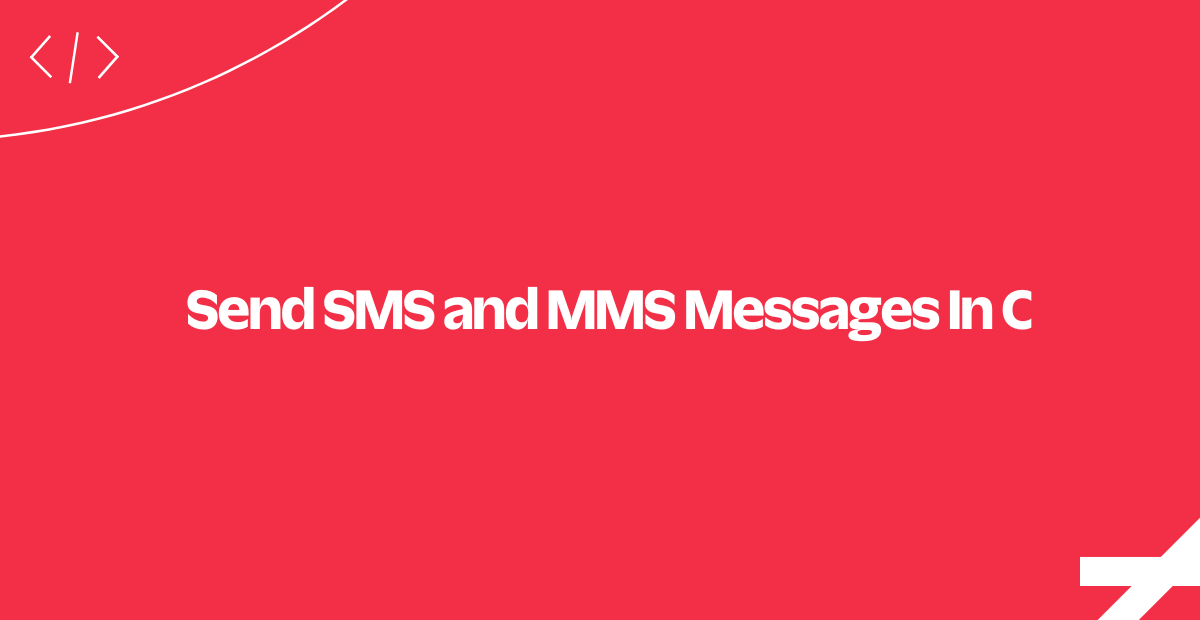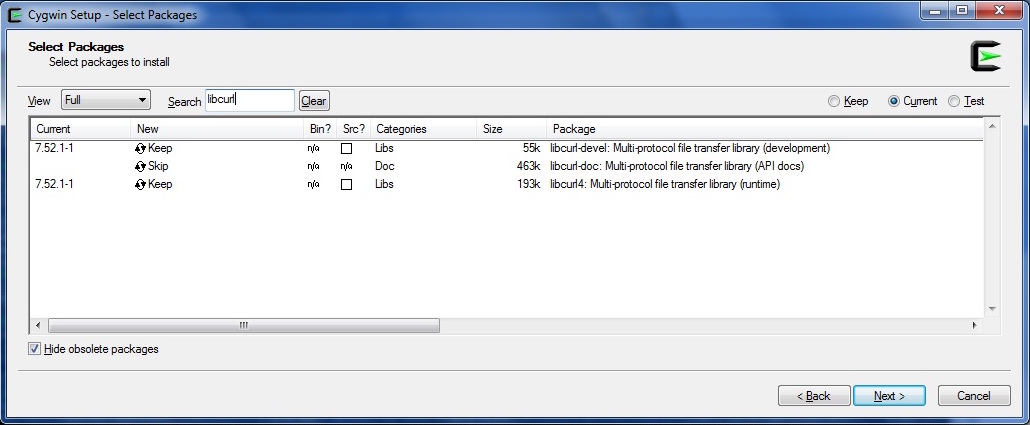Send SMS and MMS Messages In C
Time to read: 2 minutes

Today we'll use C, libcurl, and some POSIX APIs to send SMS and MMS messages using the Twilio REST API. Outside of a (at least mostly) POSIX-compliant build environment, you'll also need libcurl for the code in this guide.
Let's get started!
Sign up for a Twilio Account (or Sign In)
Before exercising the Twilio API, you'll need to either create an account, or login to an existing account.
Don't have an account? Sign up for a free Twilio trial.
Find or Purchase a SMS-Capable Number
This demo requires a Twilio phone number with SMS (and MMS) capabilities. You can either use a phone number that you already have, or purchase a new one with SMSes enabled.
Here's how SMS-capable numbers appear in your number list:

And here's how you can search for a new number with SMS (or MMS, if you select it as well) capabilities:

Prerequisites for This C SMS Sending Guide
This guide targets POSIX Compliant environments, and was tested with clang-800.0.42.1 on Mac OSX 10.11, gcc 4.9.2 on Raspbian (kernel 4.4.34-v7+) and gcc 5.4.0 in Cygwin 2.877 on Windows 7 64-Bit. At a minimum, we'll need:
- stdio.h, stdlib.h, unistd.h - C POSIX libraries
- libcurl - Client-side transfer library
libcurl was available on the Mac already. On the Raspberry Pi, you can install a suitable version with:
sudo apt-get install libcurl4-openssl-devIn Windows 7, I was able to install libcurl with Cygwin Setup:

Building c_sms
Here's our example Makefile, which was usable in all three environments.
On most *NIX-type systems (including in Cygwin), building is probably as easy as:
git clone https://github.com/TwilioDevEd/twilio_c_sms.git
cd twilio_c_sms
make
You might need to make minor edits to the Makefile to build c_sms in your environment. Most commonly, you'll change the library search paths or the compiler.
Send an SMS or MMS Message with C
We've just built c_sms, which can be called from the command line and will attempt to send an SMS or MMS before exiting. twilio.c includes a function, twilio_send_message, which is easily adaptable to your own codebase (of course, you will need to add validation and safety before using it in production. For example, note that as is you can add more parameters through the variables!).
Let's look at how twilio_send_message works.
- First, we prepare our account credentials and HTTP Parameters to be consumed by the Twilio API.
- Second, we need to prepare libcurl to execute a HTTP POST to the Twilio API. The
curl_easy_setoptfunction calls instruct libcurl to post with the url and body we set, and use our Account and Auth Token details. - Third, we execute our POST then clean up with the lines:
res = curl_easy_perform(curl); curl_easy_cleanup(curl); - Fourth, we check for any errors from either libcurl or the Twilio API.
Here's the code for twilio_send_message in C:
Running c_sms
Once c_sms is built, calling it from the command line is easy. Simply pass in your account credentials, from & to numbers, and a message body and you'll be lighting up a phone. Here's an example session:
account_sid=ACXXXXXXXXXXXXXXXXXXXXXX
auth_token=your_auth_token
bin/c_sms -a $account_sid -s $auth_token -t "+18005551212" -f "+18005551213" -m "Hello, World!"
# Optionally, use '-p http://some/path/to/img.jpg' to send an MMS.Do You See What I C? Time For Your Own Creation
45+ years and billions of lines of code later, it's obvious that Dennis Ritchie designed a language to go the distance. Now Twilio can come with you on your C-journey with just a few helper libraries and your SMS and MMS use case.
We hope this is a good starting point; please let us know what you build on Twitter!
Related Posts
Related Resources
Twilio Docs
From APIs to SDKs to sample apps
API reference documentation, SDKs, helper libraries, quickstarts, and tutorials for your language and platform.
Resource Center
The latest ebooks, industry reports, and webinars
Learn from customer engagement experts to improve your own communication.
Ahoy
Twilio's developer community hub
Best practices, code samples, and inspiration to build communications and digital engagement experiences.
